I'm working on a 3D axis-symmetric system (here for simplicity I'm showing a sphere). I can solve the problem in the x-z plane to find a vector field like the one in the following stream plot:
Given the symmetry of the problem, I can rotate this solution around the z-axis to get the full 3D vector field. Now, I would like to somehow make a 3D plot of this solution. The most straightforward way I could think of is to make a surface plot of the system without the x>0 && y<0 region, like this:
And then overlay the previous stream plot on the (y=0 && x>0) and (x=0 && y<0) planes resulting from the "cut-out" of the surface. Any suggestions on how to achieve this? Or is there maybe another better way to visualise the 3D result?
Here's a MWC that generates the figures (the x_Car and m_Car used are just an example):
import numpy as np
import matplotlib
import matplotlib.pyplot as plt
from scipy.interpolate import griddata
ell = 0.62
gamma = 1
Rbase, Rcap, center = 0.62, 0.62, 0
###################
###### Stream plot
res = 200
x_Car = [[-1.8417224772056704e-16, -0.0, -0.5726312223685197],
[7.597102430294396e-17, 0.0, -0.6203504908994001],
[0.020037100834806584, 0.0, -0.5857436781333181],
[0.030439155856322415, 0.0, -0.6196032515649681],
[0.020156894294067102, 0.0, -0.5477190352848064],
[-1.6882456041048852e-16, -0.0, -0.5249119538377125]]
m_Car = [[-1.60647705e-05, 0.00000000e+00, -2.43349475e-01],
[ 0.00022923, 0. , -0.21359168],
[ 0.00627664, 0. , -0.23712676],
[ 0.01131077, 0. , -0.21533309],
[ 0.00655443, 0. , -0.25987232],
[ 2.65801174e-05, 0.00000000e+00, -2.72980539e-01]]
m_Car_T, x_Car_T = np.array(m_Car).T, np.array(x_Car).T
cm = matplotlib.cm.coolwarm
norm = matplotlib.colors.Normalize(vmin=0,vmax=1)
sm = matplotlib.cm.ScalarMappable(cmap=cm, norm=norm)
xx, zz = x_Car_T[0], x_Car_T[2]
x_grid, z_grid = np.meshgrid(np.linspace(xx.min(),xx.max(),res),np.linspace(zz.min(),zz.max(),res))
x_vector_interp = griddata((xx, zz), m_Car_T[0], (x_grid, z_grid), method='cubic')
z_vector_interp = griddata((xx, zz), m_Car_T[2], (x_grid, z_grid), method='cubic')
width, height = matplotlib.figure.figaspect(1.5)*1.2
fig, ax = plt.subplots(1,1,figsize=(width,height))
ax.pcolormesh(x_grid/ell, z_grid/ell, np.sqrt(x_vector_interp**2+z_vector_interp**2), norm=norm, cmap=cm)
ax.streamplot(x_grid/ell, z_grid/ell, x_vector_interp, z_vector_interp,
color='k', density=1.1) #, maxlength=6, integration_direction='both'
xrange = np.linspace(0,Rbase,100)
ax.plot(xrange/ell,-np.sqrt(Rbase**2-xrange**2)/ell,'k')
zcap = np.sign(gamma)*Rcap+center
ax.plot(xrange/ell,(np.sign(gamma)*np.sqrt(Rcap**2-xrange**2)+center)/ell,'k')
ax.plot((0,0),(-Rbase/ell,zcap/ell),'k')
ax.set_ylabel('$z/\ell$'); ax.set_ylim(-(Rbase+0.1)/ell,(Rbase+0.1)/ell)
ax.set_xlabel('$x/\ell$'); ax.set_xlim(-0.1/ell,(Rbase+0.1)/ell)
plt.colorbar(sm,label=r'$|\mathbf{m}|$')
# plt.axis('off')
# plt.axis("image")
plt.show()
###################
###### Surface plot
width, height = matplotlib.figure.figaspect(1.2)*1.5
fig, ax = plt.subplots(1, 1, figsize=(width, height), subplot_kw={"projection": "3d"})
### Plot the cap
theta, phi = np.mgrid[0:np.pi/2:180j, 0:1.5*np.pi:270j] # phi = alti, theta = azi
X = Rcap*np.sin(theta)*np.cos(phi)
Y = Rcap*np.sin(theta)*np.sin(phi)
Z = Rcap*np.cos(theta)+center
for i in range(len(theta)):
for j in range(len(phi[0])):
if Z[i,j] < 0:
Z[i,j] = np.nan
else:
pass
ax.plot_surface(X/ell, Y/ell, Z/ell, linewidth=0, antialiased=False, rstride=1, cstride=1, color='grey')
### Plot the base
theta, phi = np.mgrid[np.pi/2:np.pi:180j, 0:1.5*np.pi:270j] # phi = alti, theta = azi
X = Rbase*np.sin(theta)*np.cos(phi)
Y = Rbase*np.sin(theta)*np.sin(phi)
Z = Rbase*np.cos(theta)
ax.plot_surface(X/ell, Y/ell, Z/ell, linewidth=0, antialiased=False, rstride=1, cstride=1, color='gainsboro')
ax.plot([0,0],[0,0],[-Rbase/ell,(Rcap+center)/ell],'k-',zorder=100)
ax.set_xlabel('$x/\ell$'); ax.set_ylabel('$y/\ell$'); ax.set_zlabel('$z/\ell$')
ax.set_box_aspect([1,1,(2*Rbase)/(Rbase+Rcap-center)])
plt.show()
UPDATE
@Jared had suggested a way to do this with a quiver plot. Although this could be a way if nothing else is possible, I would really prefer to have the stream plot, as it shows the data a lot better (some of my fields are a lot more intricate and the continuous lines help visualise them much better than the discrete arrows). Is there any way to achieve this?


